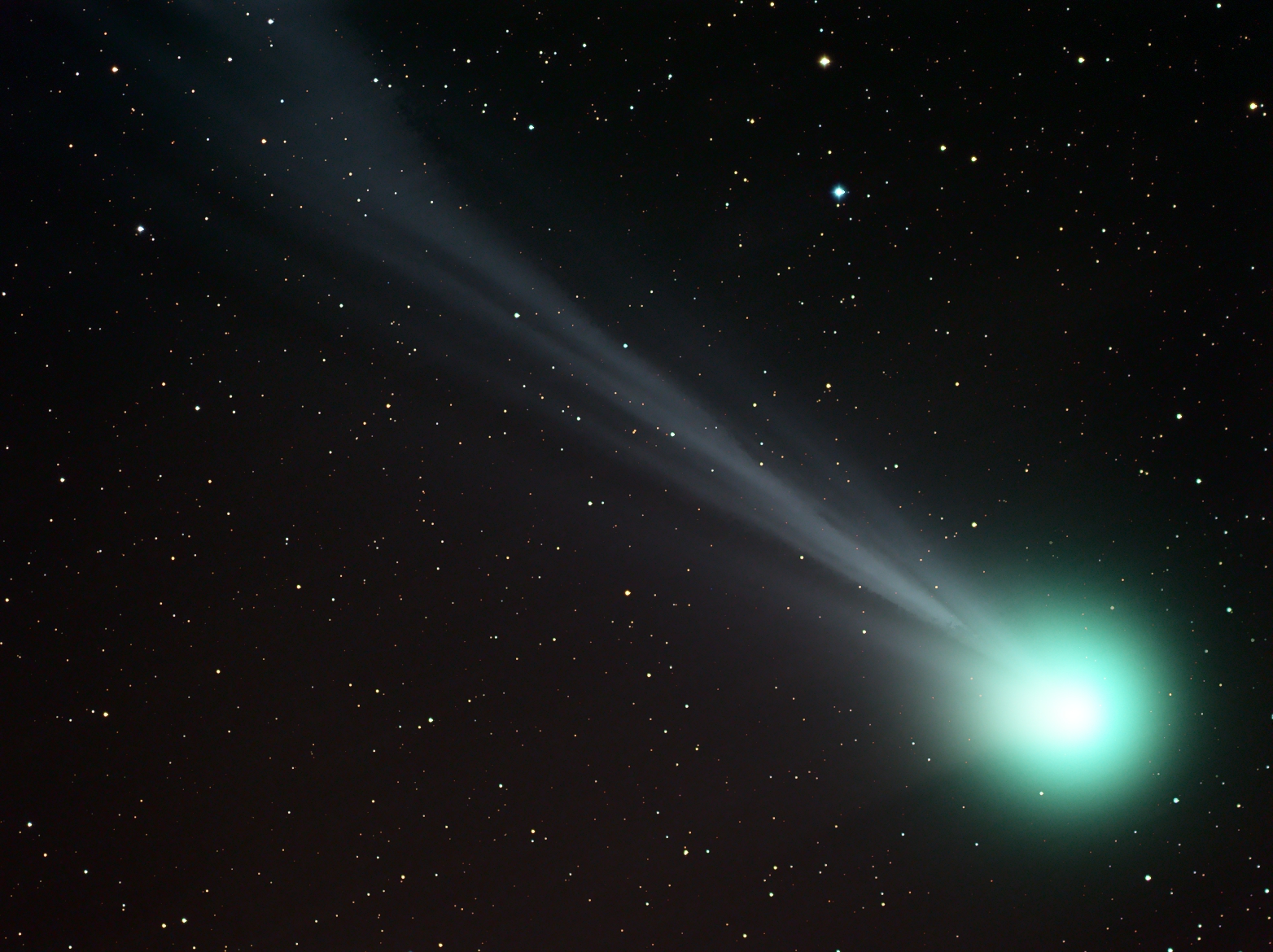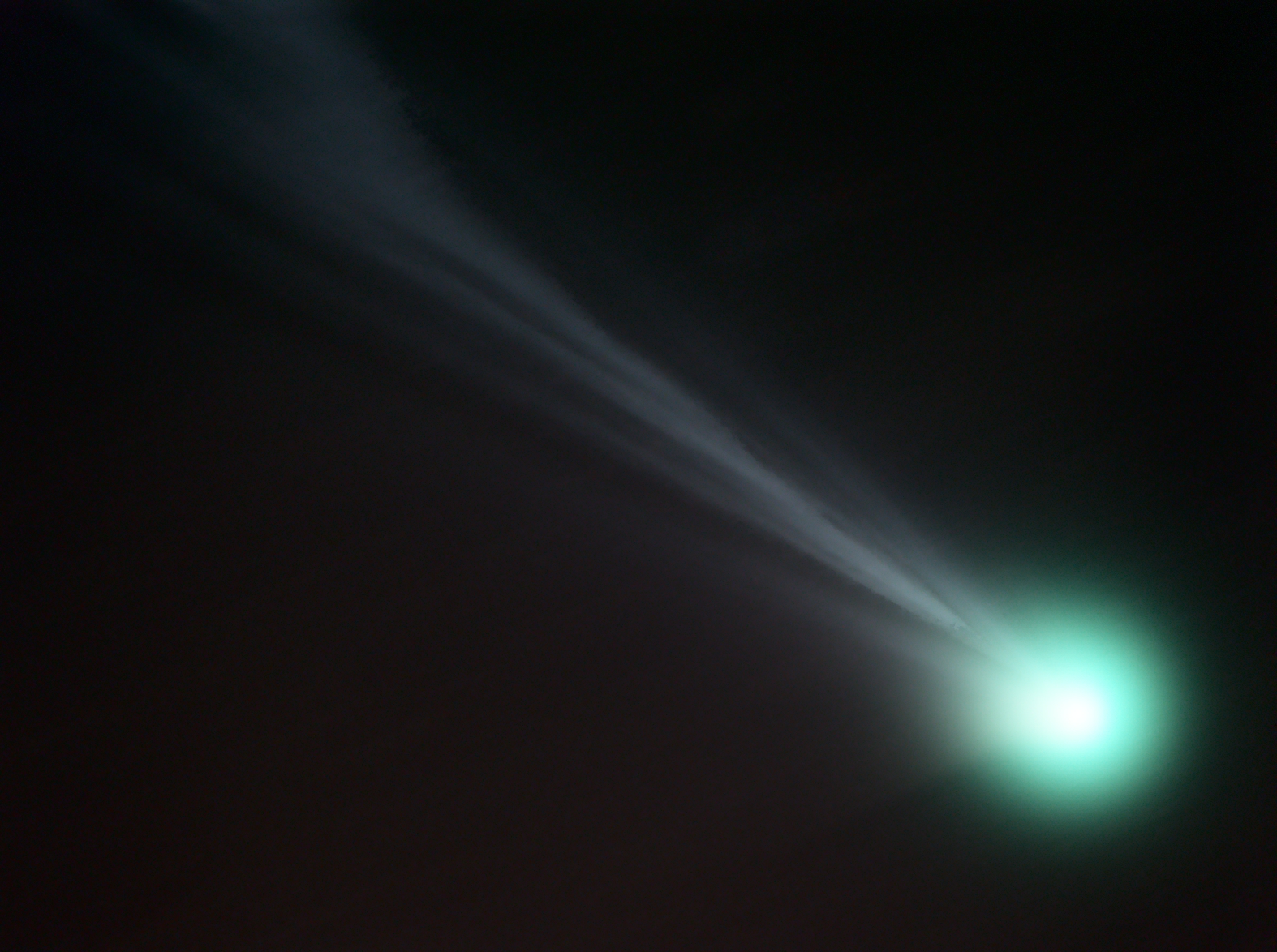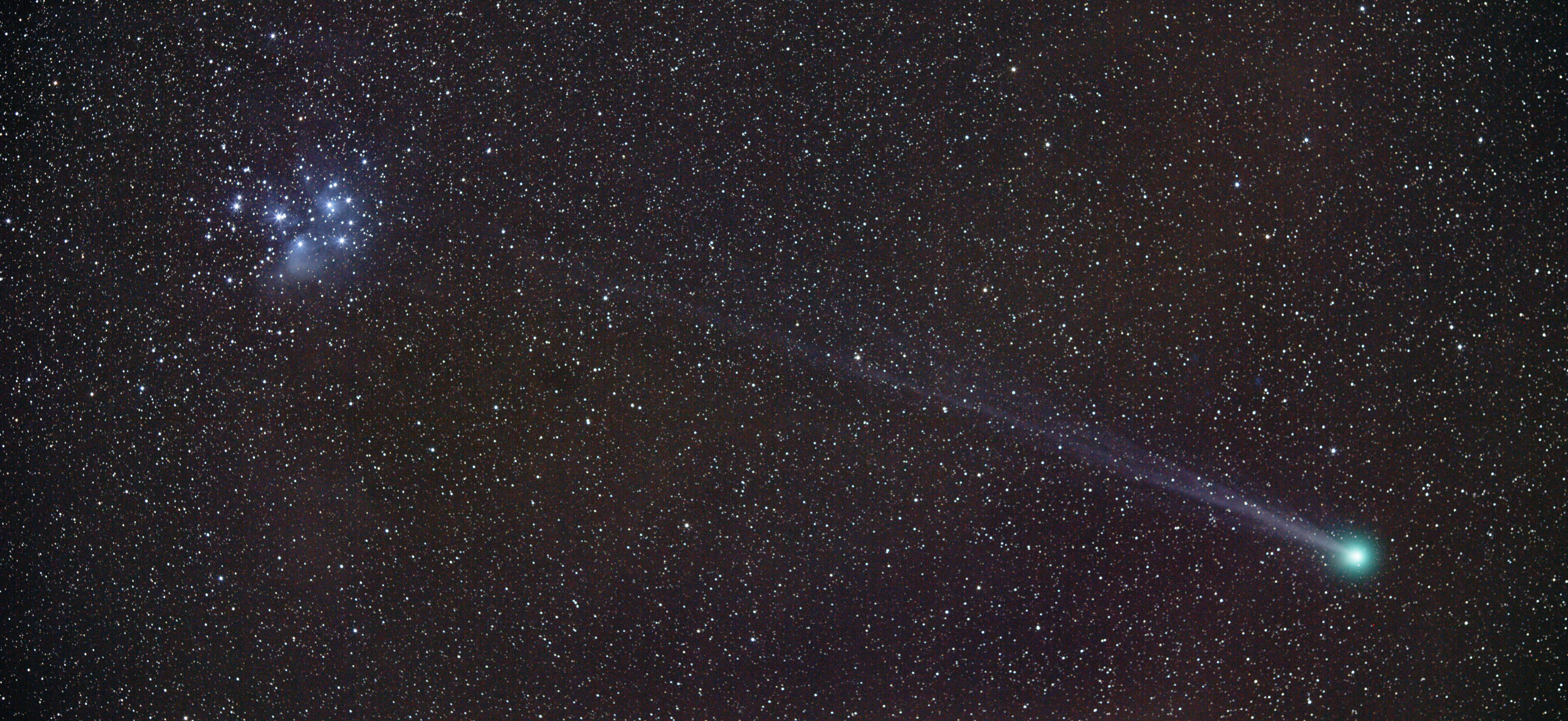Comet C2014 Q2 LOVEJOY
What an adventure. It was the night of January 20th, 2015. We were driving an Xterra in 4-wheel drive LOW through meter-deep snow up a crazy steep hill. Graeme and I were on our way to Cabin Hill to capture comet C2014 Q2 LOVEJOY and it was -36 degrees Celsius outside! Were we nuts? Perhaps. But this was a comet for the ages and like hell we weren’t making it to Cabin Hill that night to bag it! All of a sudden as we hit the 20 degree steep part of the trail all the snow which had been accumulating on the hood slid back and onto the windshield. Both of us held our breath as we drove blind up a section of trail 7 feet wide with drainage ditches on each side. Luckily the snow wasn’t sticky and a few quick flicks of the windshield wipers cleared the snow. We looked at each other in disbelief. Close call… but we had to keep going. We had come too far to turn around now!
Once at the cabin, we quickly set up our gear. I was fearful of not being able to start the engine back up to come home so I left it running all night. I hated having to do it but it also served as a shelter, keeping us warm while the telescopes captured the comet.
By 10:34pm my telescope busy bagging photons from the comet. I used my Takahashi FSQ106 on my Losmandy G11 mount. For the first time, I tried capturing a comet using a CCD camera with RGB filters instead of using a one-shot-color camera. Each of the sub exposures I took were only a minute long since the comet was moving pretty quickly. Since I cycled through the red, green and blue filters for each successive image, sufficient time elapsed between each sub-exposure. This would later make it easy integrate two separate images. In one, the images would be stacked relative to the comet and in the other they would be stacked relative to the stars. Using this technique, I would be able to remove the stars completely in one of the images. The computer was set to capture 2 hours of data and it seemed to be working great.
Once I had my gear all set up and running on its own, I went over to help Graeme set up his gear. He had just purchased a Losmandy GM-8 and was trying to figure out how to put it all together with his Skywatcher 100mm refractor. We got that thing polar aligned and aiming at comet LOVEJOY in no time at all.
At 12:30 AM I then set up a Canon 5D Mark II to capture 1000 seconds of the comet with the Pleiades (M45) star cluster. I used a Canon 135mm f/2L lens stopped down to f2/8 to produce the image seen at the end of this article.
For hours we sat in a warm truck watching the night sky through the windshield. We dreaded the moment we had to go back outside to tear down the gear and head home. The time eventually came and as we drove back down to the main road, it felt like we were being guided by our tracks on the way up. It was like the truck was on skis. We had a chance to see just how close to the ditch we came while driving blind. Six inches to the right and the night would have been spent completely differently. Back on the main road we could finally relax and enjoy the long winding road back home. Perhaps we were a little nuts that night, but we successfully managed to capture an incredible comet!


